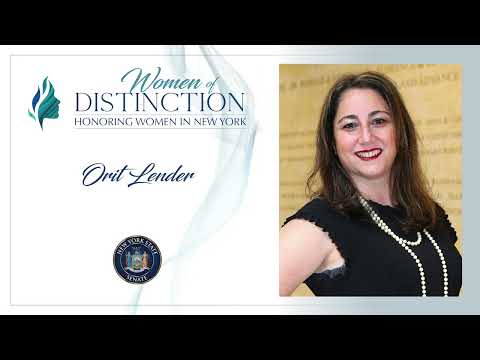
Information About Mold Remediation
Andrew J Lanza
December 13, 2012
Repairing homes damaged by flooding from Hurricane Sandy requires safe work practices to reduce dust and stop mold growth. Mold can worsen asthma and trigger allergies in sensitive people and is a health risk for those with weakened immune systems. Dust from cleanup and repairs can irritate eyes, nose, throat, and lungs.
What You Should Know
- Mold needs water and a food source to grow. Mold can begin to grow in wet building materials and household items if they are not completely dry within 48 hours of getting wet. You can see and smell mold. It comes in many different colors, may look furry, slimy, or powdery, and often smells musty, stale, earthy, or mildewy. Treat all mold types the same and clean as described below.
- Mold grows on wet sheetrock, ceiling tiles, paint, wallpaper, carpeting, wood, clothing, furniture, insulation, and other materials.
What You Should Do
- Inspect your home thoroughly for mold.
- Check behind walls, underneath moldings, in crawl spaces, underneath carpets and flooring and in insulation and other hidden areas.
- Check the exterior and under and behind siding for damage and wetness. You may have to remove the siding to allow the structure to dry out thoroughly.
- Isolate wet, moldy areas, and areas under repair. Seal doors and openings with plastic sheeting and duct tape or other materials. Cover furniture and floors.
- Consider hiring a contractor to do the cleanup and repairs if your home has extensive damage. Hire a contractor who has experience with dust suppression methods to prevent the spread of dust.
- Protect yourself and your loved ones while removing or cleaning moldy materials.Wear an N-95 dust mask and safety goggles when disturbing mold or performing any work that produces dust. Make sure you fit the N-95 dust mask onto your face so that air doesn’t leak in around the edge. Free N95 dust masks are available at the NYC Restoration Centers and for sale at supply, hardware and home improvement stores. Learn more about wearing the N95 dust mask (PDF).
- Wear work gloves, washable work clothes and, if needed for removing heavy materials or working above your face level, a hard hat.
- After completing the work, change shoes and clothes before entering clean areas of the home. Wash these clothes separately from other laundry.
- Shower when work is done. Wash your hands and face with soap and water especially before eating or drinking.
- Keep children and pets out of work areas at all times.
- Use safe work practices to reduce dust and stop mold.
- Do not run any electrical equipment or appliances near standing water or on wet materials.
- Open windows in the work area when removing flood-damaged or moldy building materials or making repairs that produce dust.
- In general, discard wet, damaged and porous building materials, including drywall/sheetrock, wall paneling, ceiling tiles, and insulation. Remove six to 12 inches above any wet, damaged or moldy areas of building materials. Wall studs and solid wood that are thoroughly dried do not have to be removed.
- Sanding, sweeping or scraping dry surfaces can produce dust. Gently wet down dusty surfaces with dilute soapy water in a spray bottle before sanding, scraping or removing sheetrock or other building materials. If available, HEPA (high efficiency particulate air) vacuum-shrouded tools or a vacuum with a HEPA filter may be used on dry surfaces and materials.
- Asbestos may be found in insulation material around old pipes and boilers. If you’re not sure if the insulation contains asbestos, contact a licensed asbestos contractor. Do not remove it yourself. Strict regulations require special procedures to protect workers and minimize asbestos contamination.
- Discard water-damaged items such as rugs, furniture, or clothing if they cannot be cleaned. Throw away items in sealed plastic bags with the regular trash.
- Clean hard surfaces such as metal, glass, hard plastic, solid wood and concrete with soapy water if they are structurally sound and undamaged. Use mops, sponges and cleaning rags.
- Disinfect all surfaces and items touched by flood water or sewage after cleaning is completed. Wipe down surfaces with bleach solution (one cup of bleach added to two gallons of water). Do not use full-strength bleach or mix bleach with other cleaning products.
- Do not fog or spray chemicals to treat or prevent mold growth. Spraying and fogging expose people to airborne chemicals and may give a false impression that the mold has been removed.
- Dry work areas thoroughly and eliminate sources of moisture and water to prevent mold growth after cleanup. Use dehumidifiers, ventilation and heating to remove moisture. Open windows and use fans to help dry and ventilate spaces.
- Leave walls open until they dry out to prevent sealing in moisture. Do not replace walls, siding, tiles, sheetrock or other items until all building materials, including internal wall and floor framework, are fully dry and clean. Drying may take several weeks to complete but is very important to prevent mold growth. You can use a moisture meter, available at hardware or home improvement stores, to measure dampness in building materials. However, some meters may not be able to measure moisture in deeper layers.
- After the repairs are done, all areas should remain clean and dry. Any remaining moisture sources should be identified and corrected. Damp areas, bubbling or peeling paint, recurring mold growth, or musty odors may indicate a persistent moisture problem.
Hiring a Contractor
Mold remediation does not require a license in New York so any type of contractor may perform this work. While we do not recommend any specific contractors, lists of local contractors with experience in mold remediation can be found from the Institute of Inspection, Cleaning and Restoration Certification (www.iicrc.org) or American Council for Accredited Certification (www.acac.org), through web searches, or by asking neighbors or friends for referrals.
Good contractors will be experienced in methods to prevent the spread of dust. They should carry insurance which includes their work performing mold remediation. They should not recommend fogging or general spraying of biocides. They should inspect before providing a written quote.
- Quotes should include a description of removal/disposal/cleaning methods to be used, a detailed list of specific work to be done, methods for protecting the remainder of the home and occupants. Final payment should not be due until the work is successfully completed.
- You should consider the assignment successfully completed when the work area is dry, clean, and free of visible mold, debris, and moldy odors.
Resources
- NYC Restoration Centers provide information on the NYC Rapid Repairs program, temporary housing, and health and medical benefits. They also provide food and nutrition assistance, counseling, and other services. You also can pick up a free N95 dust mask there.
- NYC Rapid Repairs is a free program to help residential property owners affected by Hurricane Sandy make emergency repairs, including permanent or temporary restoration of heat, power, and hot water, and other limited repairs to protect the home from further significant damage.
- For reimbursement of additional repairs:
- If you are applying for disaster assistance or filing an insurance claim, take photos of all damage before cleaning up. Keep receipts of all repairs.
- Apply for the Federal Emergency Management Agency (FEMA) Individual and Households Program. This program will provide money to repair a home so that it is safe and sanitary to live in but it will not pay to return the home to its condition before the disaster.
-
- Apply online at www.disasterassistance.gov or by calling 1-800-621-FEMA (3362).
- Repairs made through NYC Rapid Repairs will not affect the amount a homeowner is eligible to receive through FEMA.
- Contact your insurance agent about filing a claim.
- Contact the New York State Insurance Department, Consumer Services Bureau if you have complaints about your insurance provider: 800-342-3736.
- Contact the New York State Insurance Department, Consumer Services Bureau if you have complaints about your insurance provider: 800-342-3736.
- The New York City Department of Health and Mental Hygiene’s Guidelines on Assessment and Remediation of Fungi in Indoor Environments (PDF)
For more information, call 311 or visit nyc.gov.

